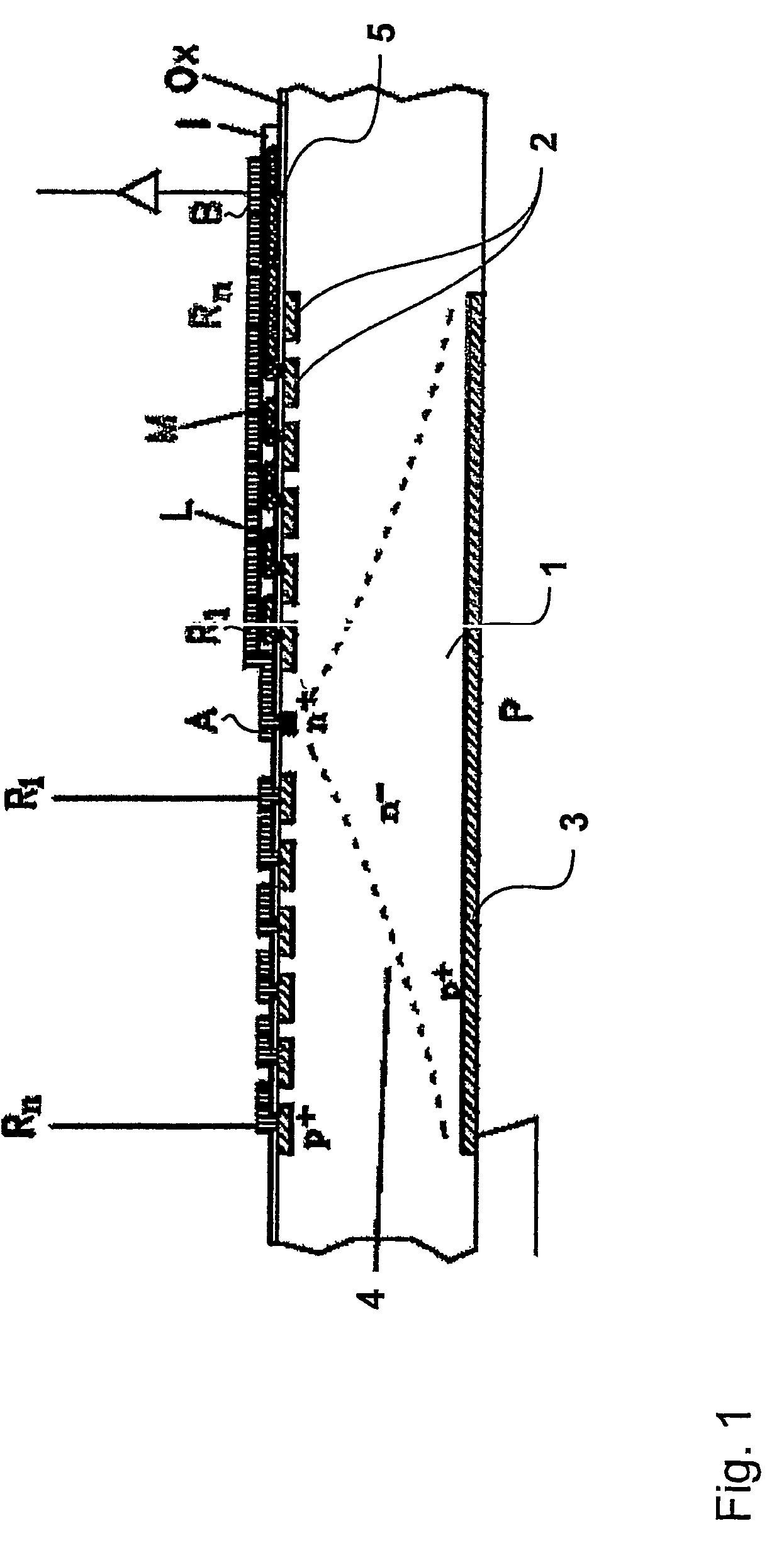Conductor crossover for a semiconductor detector
a semiconductor detector and crossover technology, applied in the direction of instruments, x/gamma/cosmic radiation measurement, radio frequency control devices, etc., can solve the problems of electrical drift field, design of connecting conductors representing general problems, and total depletion of semiconductor substrates
- Summary
- Abstract
- Description
- Claims
- Application Information
AI Technical Summary
Benefits of technology
Problems solved by technology
Method used
Image
Examples
Embodiment Construction
[0028]FIG. 1 shows a silicon drift detector in an enlarged cross-sectional view, which may be used in X-ray spectroscopy, for example. The cylindrical drift detector comprises a semiconductor substrate 1, on the surface of which doped regions form semiconductor electrodes 2, 3, and A. Radiation detection is performed by the detection of electrons which are released by the radiation in the semiconductor substrate 1, the semiconductor electrodes interacting in a manner known as such, as described for example by L. Strüder in the above-referenced publication. The semiconductor substrate 1 comprises an n-doped silicon disk, the doping being so weak that the semiconductor substrate 1 is totally depleted in the sensitive region. The semiconductor substrate 1 has, for example, a thickness of approximately 300 μm and a diameter of several mm, depending on the application, such as approximately 2.5 mm, or up to several cm, for example 10 cm.
[0029]The readout electrode A, which is made out of...
PUM
 Login to View More
Login to View More Abstract
Description
Claims
Application Information
 Login to View More
Login to View More - R&D
- Intellectual Property
- Life Sciences
- Materials
- Tech Scout
- Unparalleled Data Quality
- Higher Quality Content
- 60% Fewer Hallucinations
Browse by: Latest US Patents, China's latest patents, Technical Efficacy Thesaurus, Application Domain, Technology Topic, Popular Technical Reports.
© 2025 PatSnap. All rights reserved.Legal|Privacy policy|Modern Slavery Act Transparency Statement|Sitemap|About US| Contact US: help@patsnap.com



